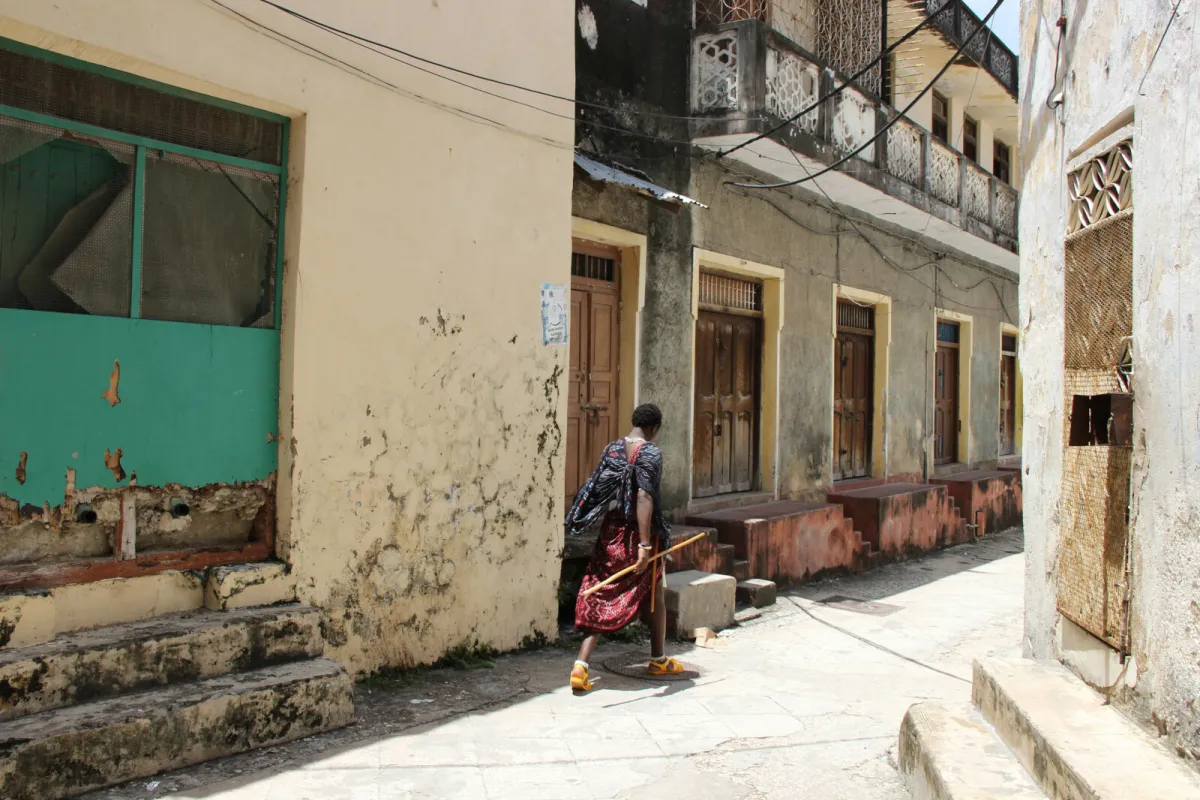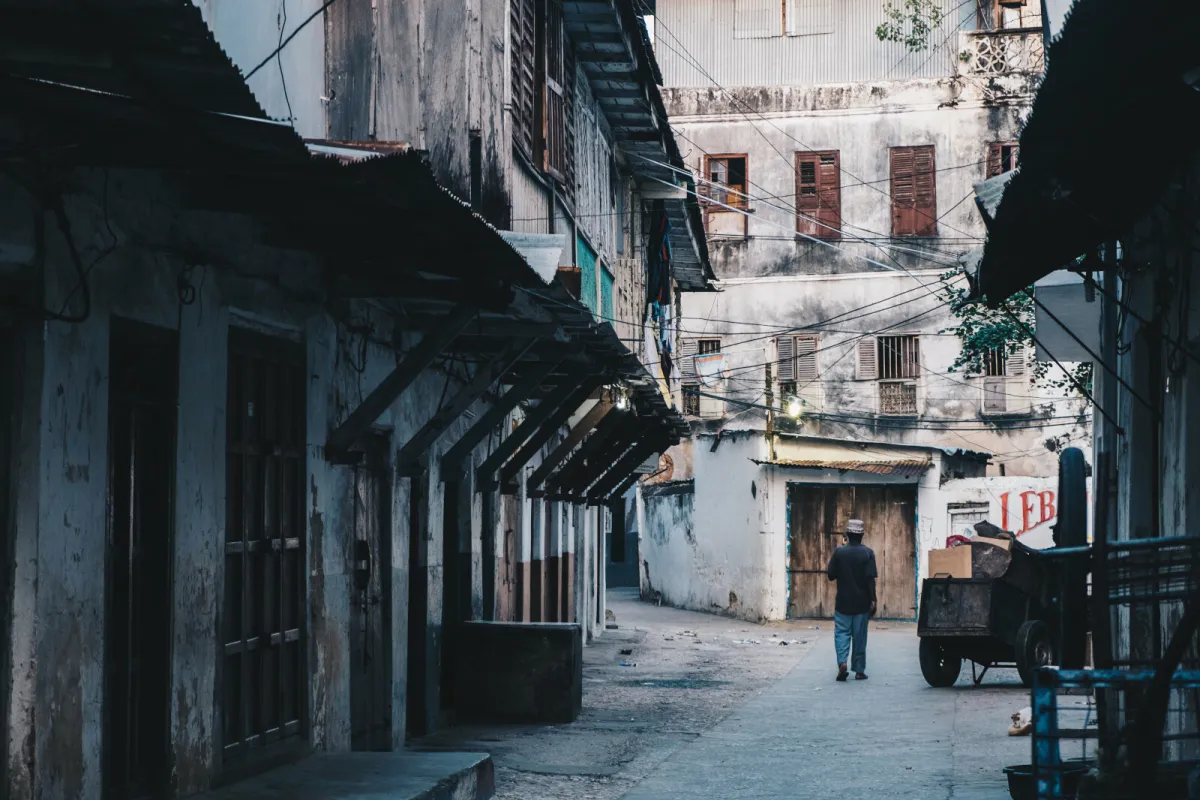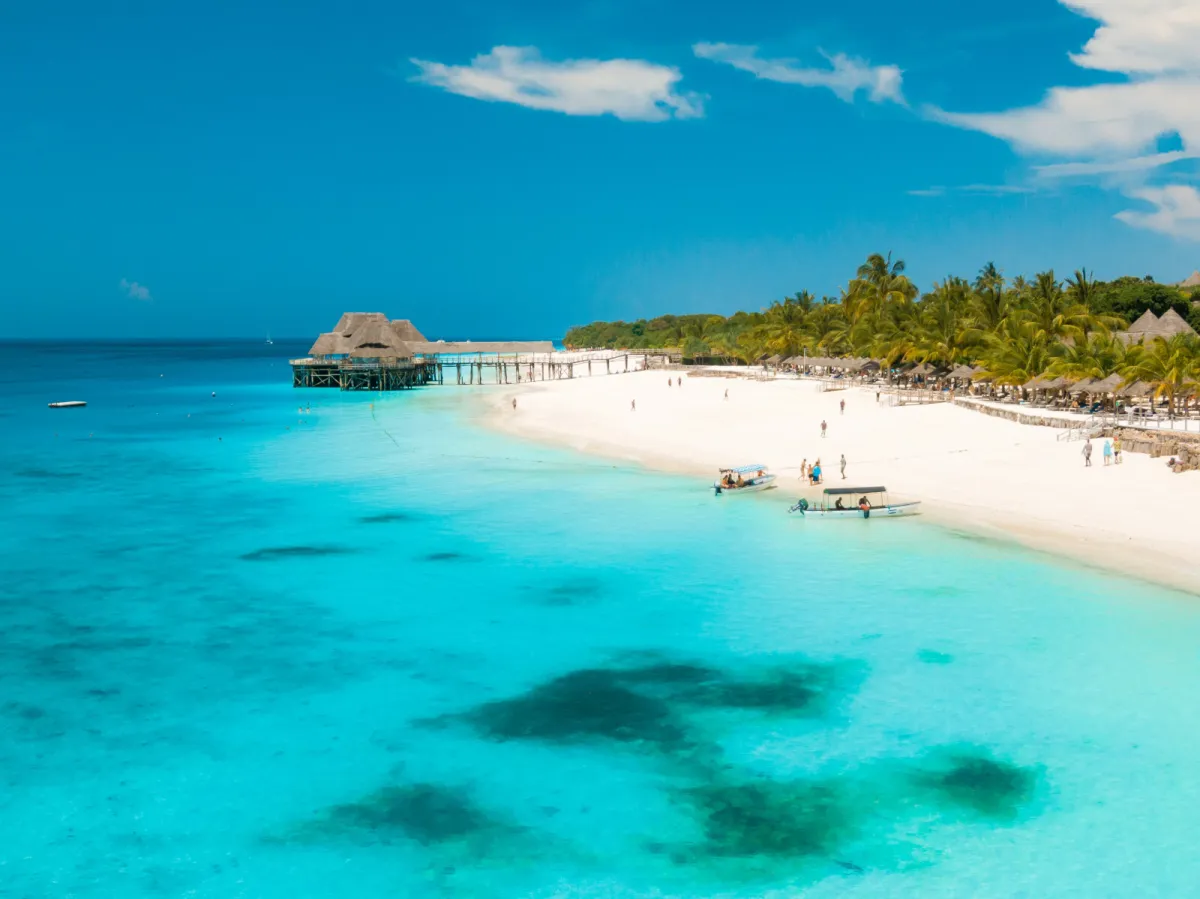Zanzibar Travel Guide
Zanzibar Travel Guide
Zanzibar Island, along with Pemba Island to the north, are referred to as the Spice Islands. Zanzibar is best known as a tropical beach paradise, which is easily combined with a safari in Tanzania or Kenya. The history here harks back to ancient trade routes. In Stone Town, Indo-Arabic influences intertwine with African Swahili origins to create a heady fusion of sights, sounds and scents. Whether you're looking for the culture and bustle of historic cobbled streets in Stone Town or the peaceful beaches and the warm Indian Ocean with its dhow trips and excellent diving, Zanzibar is simply paradise.
Highlights
- Stone Town with cobbled streets and romantic, multicultural history
- Palm-fringed, sandy white beaches
- Warm, inviting turquoise Indian Ocean
- Watersports galore
- Spectacular coral reefs, perfect for snorkelling and scuba diving
- Range of accommodation, from large hotels to small private lodges
- White-sail dhow trips
- Spice farm visits
Zanzibar is one of those idyllic holiday destinations where you can spend your days lazing around on perfect white beaches. There is plenty to see and do if you're the active type. However, all the activity is set in a beautiful, relaxed island atmosphere so if you're wanting to sit back and enjoy the view, it's perfect for that too! The weather is balmy, the sea is warm, Stone Town's bustling activity is perfectly complemented by the aromatic spice farms and laidback sandy white beaches. Seriously, it's paradise.
History
The history of the islands is fascinating and is still evident in the crazy, cobbled streets of Stone Town. The island is known as the birthplace of Swahili and it became a major port for traders from Persia, Arabia, Indonesia, India, China, Malaysia and, later, Portugal. It is this mix of cultures that brought about the melting pot of architecture and tradition that still fills Zanzibar with an exotic sense of romance.

Maasai tribesman strolling through streets of Zanzibar
In the early 1500s, after Vasco da Gama's visit in 1498, Zanzibar became a colony of Portugal. The islands have a chequered history of rule from Arab sultans in the slave trade to British protectorate to full self-governance by Zanzibar in 1963. It was briefly ruled by Sultan Jamshid bin Abdullah until he was deposed. In 1964, Zanzibar and Tanganyika merged to form the United Republic of Tanzania, of which Zanzibar is a semi-autonomous region.
Zanzibar Islands
The biggest of the fifty islands that make up the archipelago, Zanzibar Island, is known by locals as Unguja. This island holds the capital with the historic city of Stone Town on its western shore. A little to the northeast is the second biggest island, Pemba, with all the rest of the islands being smaller.
The island beach resorts range from small, secluded boutique hotels and houses with private beaches to larger hotel resorts offering a range of activities. There is something to suit every person's ideal beach holiday on this archipelago. On many of the smaller islands, more exclusive, private holidays are offered, each one with its own charm and wonderful beaches, making it ideal for honeymooners.
On the islands, the rich and fertile soil provides for Zanzibar's spice and raffia farms which are major contributors to the island economy. The heady scent of cloves, cinnamon and vanilla float on the sea breeze and a farm is well worth visiting!
Stone Town
This historic city is where most people land after catching a 75- to 90-minute ferry from Dar es Salaam. It is noisy and busy and fascinating. Arabic influences mix with African flair in the ancient winding streets where mosques stand shoulder-to-shoulder with sultan palaces and bustling markets. There is so much to see, including the old, ornate, intricately-carved wooden doors for which Zanzibar is renowned.

Stone Town, Zanzibar
A couple of days in Stone Town makes for a wonderful experience, especially when coupled with a few days to relax at the beach. You'll be pleased to leave the hustle behind and enjoy the peace and relaxation of tropical island living.
Things to see and do in Zanzibar
There is no shortage of adventures and activities in Zanzibar. Whether it's relaxation or action you're looking for, it's available on Zanzibar. This is the ideal spot to lie back on a lounger and read a book on the beach while you listen to the gentle sounds of the Indian Ocean lapping at the shore. Look up every now and again, to see a traditional white sail dhow float by. If you're looking for more action, Zanzibar offers a range of watersports from kayaking, sailing, windsurfing, paddle boarding and snorkelling to some of the best reef diving in the world.
On land, there are beach activities like volleyball and bikes can be hired to ride around exploring. Need a gift to take home? Visit the markets in Stone Town or along the coast and support local traders by buying beautiful carvings or aromatic spices.

Perfect beach escape
A Spice Tour is a must-do. Visit the coconut and spice plantations where the aromas of cloves, cinnamon and vanilla intermingle with the scent of oranges, limes, coconut and the more exotic custard apples and breadfruit. Depending on the season, you'll be able to sample these delights. There is plenty to do from a cultural point of view, too. Ancient ruins whisper secrets of long-forgotten times and there are a number of museums chronicling Zanzibar's rich history.
Best time to visit
Situated slightly below the equator, the coolest months in Zanzibar coincide with the northern hemisphere's summer months. However, its weather is pleasant and comfortable all year round with two distinct rainy seasons, the long rains and the short rains interspersed with dry periods.
The island of Zanzibar can have its own distinct weather patterns separate from the mainland. That said, the weather is generally similar. The long rainy season can stretch from mid-March until the end of May, bringing heavy early morning showers which often clear by midday. Many lodges close at this time.
The best months to visit are during the dry, winter months from June through to October when daily temperatures average a balmy 25ºC. The short rains occur erratically during November and December often with showers early morning and late afternoon. Summer stretches from December to March, with hot sunny days and often cloudless skies. Temperatures range from mid 20ºC to low 30ºC and the evenings are balmy and comfortable.
Getting there
By air - A number of international airlines offer flights to Dar es Salaam and some directly to Zanzibar. Domestic flights are available from Tanzania's main cities to Zanzibar. Mango Airlines offer 3 flights a week from OR Tambo in Johannesburg to Zanzibar Airport near Stone Town.
By sea - Several ferries run between the mainland and Zanzibar.
Sultan's Palace in Stone Town
The Sultan's Palace, or Beit el Sahel, is a museum in Stone Town about the Zanzibari royal family and history.
Breezes Beach Club

Situated in Zanzibar on a spectacular, long beach with pristine white sands, Breezes Beach Club and Spa gives guests everything they could desire of a holiday in paradise. Being a large hotel, they offer a wide range of activities, from all the watersports and a diving school to a number of restaurants, swimming pool and tennis courts, including an incredible spa. Whether you want to relax, be active, or combine the two, Breezes Beach Club and Spa is a good place to do it all.
Dar Es Salaam

Tanzania is one of Africa's top safari destinations, known for its vast landscapes, diverse wildlife and iconic parks. From the endless plains of the Serengeti to the unique Ngorongoro Crater, Tanzania delivers some of the most rewarding game-viewing experiences on the continent. It's also easy to combine a northern Tanzania safari with a relaxing beach holiday in Zanzibar. For seasoned travellers looking to go off the beaten track, the wild and remote southern and western regions offer untouched wilderness and fewer crowds.
You may also want to look at

5 Day Luxury Serengeti Safari
Explore one of the Serengeti's most exclusive regions on this 5-day luxury fly-in safari. Based at Olmara Camp in the Soit le Motonyi area of eastern Serengeti, you'll experience exceptional game viewing in a remote, low-tourist zone known for its high concentration of big cats. This safari includes a scenic domestic flight from Kilimanjaro International Airport near Arusha to Seronera Airstrip in the central Serengeti, four nights in an eco-luxury tented camp, and expertly guided game drives in a wildlife-rich area once closed to tourists.

14 Day Best of Northern Tanzania & Zanzibar Luxury Tour
This 14-day luxury Tanzania safari and Zanzibar beach tour showcases the very best of Northern Tanzania's legendary safari circuit — including the Serengeti, Ngorongoro Crater and Tarangire National Park — followed by a tropical island escape to one of Zanzibar's most exclusive private beach resorts. With expert guiding, fully inclusive accommodation, and seamless transfers, this curated itinerary delivers an unforgettable bush and beach safari experience.

15 Day Luxury Ngorongoro, Serengeti & Zanzibar Safari
Experience the ultimate East African bucket-list adventure with our 15-Day Luxury Ngorongoro, Serengeti & Zanzibar Safari. This private, fully guided tour takes you to three iconic Tanzanian destinations: the wildlife-rich Ngorongoro Crater, the sweeping plains of the Serengeti, and the pristine shores of Zanzibar. It's the perfect blend of luxury and adventure, tailored for discerning travellers seeking an unforgettable bush and beach experience.
















